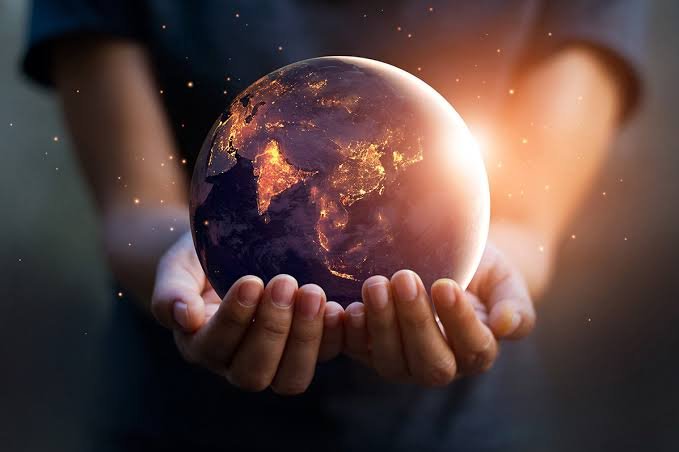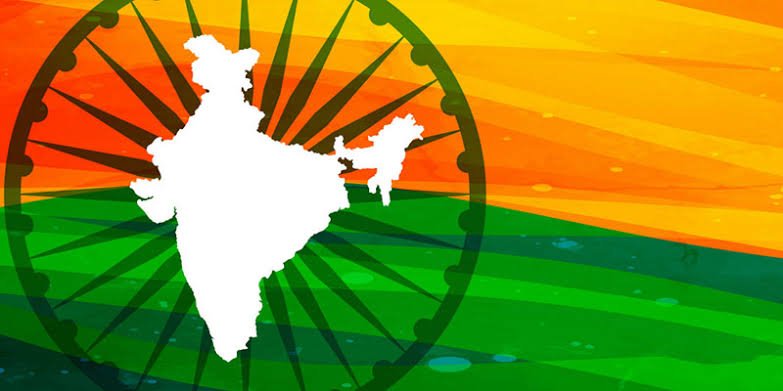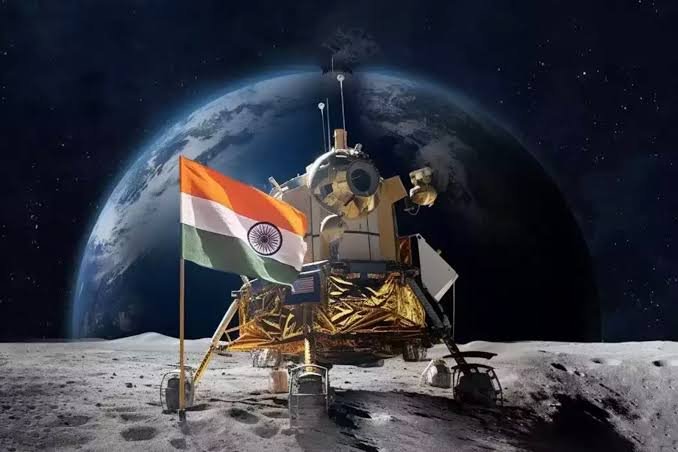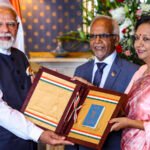Introduction
A time of rapid and profound transition is currently taking place in India, a country that is steeped in ancient traditions and possesses a rich cultural legacy. In recent years, the country has gained global attention with its ambitious programs, unprecedented technological advancements, and a reinvigorated dedication to human development. India is establishing itself as a rising global force, not just in terms of its economic development, but also in terms of social progress, environmental sustainability, and international diplomacy, thanks to the leadership of Prime Minister Narendra Modi.

One of the most pivotal milestones in India’s road to global prominence was underlined by India’s External Affairs Minister, Dr. S. Jaishankar, in his presentation to the United Nations General Assembly (UNGA). His address, which highlighted India’s revolutionary internal policies and contributions to global well-being, struck a chord not just with fellow diplomats, but with nations watching India’s stratospheric rise on the world stage.
In his speech, Jaishankar underlined that India is not simply focused on attaining economic progress for its residents but is also passionately dedicated in raising the well-being of people around the world. This vision is being implemented through comprehensive projects that encompass issues like gender equality, financial inclusion, space exploration, and humanitarian help. India’s commitment to global welfare underscores its role as a responsible global citizen, eager to lead by example in addressing some of the world’s most serious concerns.
This essay goes deep into the important elements of Dr. Jaishankar’s speech at the UNGA, covering India’s transformative domestic policies, global outreach efforts, and its expanding impact on the world stage. Let us begin by exploring the symbolic and literal import of Jaishankar’s stunning statement: “When India lands on the moon.”
India’s Global Vision: “When India Lands on the Moon”
Jaishankar’s statement, “When India lands on the moon,” was a bold metaphor that eloquently reflected India’s spirit of ambition, innovation, and global leadership. It was not simply a salute to India’s amazing successes in space exploration, such as the successful Chandrayaan-3 mission, but also a statement about the country’s commitment to elevate itself in all sectors of development—be it social, political, or economic.
India’s moon missions, particularly Chandrayaan-2 and Chandrayaan-3, have signified the country’s entry into cutting-edge scientific research. Chandrayaan-3’s success is not simply a show of India’s scientific strength but also a representation of the country’s ability to dream large and execute plans that push the boundaries of human achievement. The moon landings show that India’s ambitions are unbounded, as it works ceaselessly to claim its place among the world’s scientific and space-faring nations.
This idea, however, is not restricted to space. The metaphor extends to India’s growing role in global leadership. As India aspires for the stars, it is concurrently working towards pulling millions of its inhabitants out of poverty, driving innovation in technology, and leading the world in humanitarian and climate change projects. Jaishankar’s speech was an ode to the numerous ways India is contributing to global well-being, with the moon symbolizing the heights that India can and will attain.
India’s global vision, as described by Jaishankar, involves diversified growth that mixes science and technology with social equality, economic empowerment, and international cooperation. By embracing both its rich traditions and its technological breakthroughs, India is positioned to create a new world order where development is sustainable, inclusive, and oriented around human dignity.
Key Highlights from Jaishankar’s UNGA Speech
- Commitment to Global Well-Being
One of the most striking features of Jaishankar’s talk was India’s commitment to global well-being, which was exhibited through a range of foreign cooperation and development projects. India is actively engaged in development programs throughout 78 nations, spanning continents from Asia to Africa and Latin America. These projects are diverse and impactful, including everything from infrastructure development to healthcare and education.
India’s programs in poor nations are not only gestures of goodwill; they are aimed to foster sustainable development, drive economic growth, and create circumstances for permanent peace. India’s focus on partnering with other nations through capacity-building programs, technical expertise, and financial support has positioned it as a responsible actor in the global arena.
Furthermore, India’s participation in providing vaccines to over 100 countries during the COVID-19 epidemic emphasized its potential to contribute to global health initiatives. Through the “Vaccine Maitri” effort, India delivered nearly 200 million doses to countries in need, indicating its commitment to the worldwide fight against the pandemic. This program helped boost India’s diplomatic relations while also strengthening global efforts to tackle the health problem.
- India’s Neighborhood First Policy
India’s foreign policy has increasingly stressed regional cooperation, which Jaishankar underscored through the “Neighborhood First” initiative. This policy focuses on building relationships with India’s neighboring neighbors—such as Nepal, Bhutan, Sri Lanka, Bangladesh, and the Maldives—by extending financial, technical, and humanitarian aid.

The ‘Neighborhood First’ policy represents India’s commitment to ensuring that its neighbors grow in line with its own development. By focusing on sectors like infrastructure, energy connectivity, healthcare, and education, India has created closer relationships with its surrounding countries, establishing a regional ecosystem of shared prosperity. Recent projects, such as the supply of power to Nepal and the development of roads and bridges in Bhutan, highlight how India’s efforts have made a visible difference in its neighbors.
Additionally, India’s fast humanitarian reactions during natural disasters—whether it was providing aid to Bangladesh during floods or supporting Sri Lanka during its economic crisis—are good instances of how this approach has impacted relationships in South Asia. By portraying itself as a dependable and generous neighbor, India has been able to have substantial influence in influencing regional cooperation and stability.
- Gender Equality and Women’s Empowerment
An significant subject of Jaishankar’s talk was India’s focus on gender equality and the advances it has made in empowering women. India’s transformative initiatives to eliminate the gender gap in education, healthcare, and employment have begun to pay off, producing a more inclusive society where women are active players in the nation’s prosperity.
Government programs like “Beti Bachao, Beti Padhao” have worked towards improving societal attitudes towards girls, supporting education for female children, and ensuring that they have equal access to opportunities. The disbursement of 67 percent of the 495 million Mudra loans to women entrepreneurs is a remarkable monument to India’s attempts to include women in its economic story.
Jaishankar noted how these measures are decreasing the gender gap, and increasing financial independence for women, therefore fostering societal transformation. Empowering women not only adds to economic progress but also improves social results, including better health and educational achievements for the next generation. Women in rural and urban places alike are already establishing up small businesses, leading firms, and making their impact across different sectors.
This empowerment extends into political engagement, as women have been taking on increased leadership responsibilities in local governance. The inclusion of women at every level of society signals a shift towards gender equity, with India moving closer to attaining the UN Sustainable Development Goals on gender equality.
Expanding Employment and Entrepreneurial Opportunities
Over the past decade, India has witnessed a dramatic development in employment and entrepreneurial opportunities, particularly among small enterprises and rural regions. One of the most important programs in this area is the Pradhan Mantri Mudra Yojana (PMMY), which has disbursed 495 million loans to small companies, of which a considerable 67 percent have been allotted to women.
The Mudra lending initiative has played a crucial role in establishing self-employment opportunities for small company owners, artisans, and traders, particularly in rural and semi-urban areas. By facilitating simple access to low-interest loans, the initiative has encouraged individuals to set up enterprises, create jobs, and enhance their level of living. This has resulted in increasing grassroots economic development, which in turn has helped propel India’s GDP growth.
Beyond Mudra loans, additional programs such as the Stand-Up India plan have offered targeted support for Scheduled Castes, Scheduled Tribes, and women entrepreneurs. By focusing on inclusive economic growth, these policies have opened chances for previously marginalized parts of society to participate in and benefit from India’s booming economy.
Jaishankar’s address also underlined how the convenience of receiving financial support, often at the press of a button, has been a game changer for millions of Indian residents. By using digital platforms, Artificial Intelligence and financial technology, the Indian government has made it easier for individuals to access funds, get subsidies, and benefit from welfare initiatives.
Humanitarian Responses to Global Crises
India’s status as a humanitarian leader has come into sharp emphasis in recent years. Whether it was responding to the COVID-19 epidemic or giving disaster relief after natural calamities, India has been at the forefront of global humanitarian efforts.

The Vaccine Maitri program, which saw India distribute over 200 million doses of vaccines to more than 100 countries, was a key feature of India’s humanitarian response. This endeavor not only helped countries in Africa, Asia, and Latin America tackle the pandemic but also boosted India’s diplomatic relations with these regions. By presenting itself as a “pharmacy of the world,” India established its ability to contribute meaningfully to global health and well-being.
India has also been aggressive in responding to natural calamities. Whether it was bringing rescue goods to Turkey and Syria during the 2023 earthquake or supplying flood
aid to Bangladesh, India has proved its ability to respond fast and efficiently during times of crises. The Indian Navy’s “Operation Samudra Setu” during the epidemic, which involved repatriating stranded Indians from across the globe, further illustrated India’s humanitarian efforts.
India’s Space Exploration Achievements
Jaishankar’s remark to India landing on the moon was not simply a metaphor for ambition but a reflection of the country’s true scientific advances in space exploration. India’s space organization, ISRO (Indian Space Research Organisation), has been at the forefront of space innovation, with missions like Chandrayaan-2, Chandrayaan-3, and the Mars Orbiter Mission attracting the world’s attention.
Chandrayaan-3, which safely soft-landed on the moon’s surface, is a tribute to India’s developing capabilities in space technology. The mission’s accomplishment is not just about national pride—it signifies India’s ability to innovate, inspire, and lead in the global space competition. Furthermore, the data obtained from these missions will contribute to global scientific understanding of the moon’s geology and ecosystem, benefiting the entire global community.
India’s space program has also moved beyond exploration to practical applications. The country has launched satellites for communication, weather monitoring, and disaster management, all of which have contributed improve the quality of life for Indian inhabitants. ISRO’s aspirations to partner with other countries on space missions further emphasize India’s openness to share its technological breakthroughs with the globe.
Conclusion: India’s Role as a Global Leader
Jaishankar’s speech at the UNGA emphasized India’s revolutionary policies that are altering both the country and the world. From its ambitious space projects to its focus on gender equality, financial inclusion, and humanitarian endeavors, India is charting a unique route toward global leadership. The metaphor of “landing on the moon” effectively embodies India’s determination to achieve the extraordinary, while keeping devoted to improving the lives of its residents and contributing to global well-being.

As India continues to grow and spread its influence, it will undoubtedly play an even larger role in solving the issues of the 21st century, from climate change to global health crises. With its transformative policies and dedication to development, India is on a trajectory that not only lifts its own people but also offers solutions and hope to the world.







